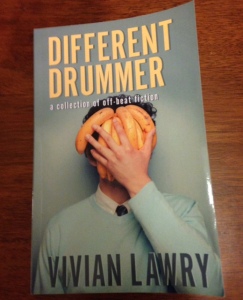I’m honored to be interviewed on Fiona Quinn’s Thrill Writing, a blog helping thriller writers write it right.
We talk about why a character might act “out of character,” group mentality, behavior matching, why people might be more passive in groups or more likely to riot, and more.
Excerpt from “The Company You Keep – Does Your Character Act ‘Out of Character’ in a Group Dynamic?”
In this article, we’re talking about what happens to a character when they get into a group where a character might act “out of character”, which is a fun way to develop the plot.
Can you first give us a working definition for “group”
Vivian – We usually think three or more, but some “group” effects are present even with only two. Also, the “group” needn’t be physically present to exert influence.
Fiona – Can you explain that last sentence?
Vivian – Some group memberships are literal memberships–for example, a church congregation, sorority, bridge club, etc. such groups are often in our thoughts, and serve as a reference or standard for behavior even when the member is alone.
Fiona – Does “group mentality” work both ways? For example, people in a riot become riotous, but people in a disaster, where they see all hands on deck, become heroes?
People in a religious forum feel more religious. . .sort of like a magnifier?
Vivian – Absolutely. I just mentioned formal groups–which are the ones having the strongest influence at a distance– but crowds, mobs, any physical gathering of people, shapes our behavior to act or remain passive.
Fiona – Can you give us a short tutorial on what we need to know about group dynamics to help write our characters right?
Vivian – Well, there is a phenomenon known as behavior matching, a tendency to do what others around us are doing. This is reflected in everything from eating to body language. Even a person who has eaten his or her fill will eat more if someone else comes in and starts eating. If others are slouching, your character isn’t likely to remain formal.
Fiona – Yes, it’s hard to pass up a piece of chocolate cake when everyone else is moaning about how delicious it tastes.
Just sayin’
Vivian – A related phenomenon–I suppose it could be a subset of behavior matching– has the label diffusion of responsibility. This is the tendency for people to stand passively by when others are present. There was a classic case, decades ago, in which a NYC woman named Kitty Genovese was murdered in the courtyard of her apartment. The murder took approximately half an hour, and dozens of her neighbors watched from their windows. No one came to help or even called the police. The more people who could help, the less likely anyone will take responsibility for doing so.
And then there is group disinhibition. This is sort of the opposite. It is that people are more likely to take risks, break the law, be violent when others are doing so. Think looting, or harassing a homeless person. Disinhibition is even more powerful when alcohol is involved. I recently posted a blog on alcohol for writers that goes into that a bit.
But the bottom line is that we behave differently with others present than when alone.
Thank you, Fiona!


 . On the shelves of that bookmobile I discovered my first serialized love: the Cherry Ames nurse books, 27 of them written between 1943 and 1968 (by Helen Wells (18) and Julia Campbell Tatham (9)). Every book involved a medical mystery. My second serial love was the Ruth Fielding series, 30 volumes produced by the Stratemeyer Syndicate, between 1913 and1934. Ruth Fielding volumes and several books of fairy tales filled a small bookshelf at the foot of my Aunt Mary’s bed. Mary was (and is) five years older than I. When I stayed with my grandparents in the summer, I devoured Aunt Mary’s books. Ruth Fielding also solved mysteries. And the fairy tales? Only a step from The Littlest Mermaid.
. On the shelves of that bookmobile I discovered my first serialized love: the Cherry Ames nurse books, 27 of them written between 1943 and 1968 (by Helen Wells (18) and Julia Campbell Tatham (9)). Every book involved a medical mystery. My second serial love was the Ruth Fielding series, 30 volumes produced by the Stratemeyer Syndicate, between 1913 and1934. Ruth Fielding volumes and several books of fairy tales filled a small bookshelf at the foot of my Aunt Mary’s bed. Mary was (and is) five years older than I. When I stayed with my grandparents in the summer, I devoured Aunt Mary’s books. Ruth Fielding also solved mysteries. And the fairy tales? Only a step from The Littlest Mermaid.